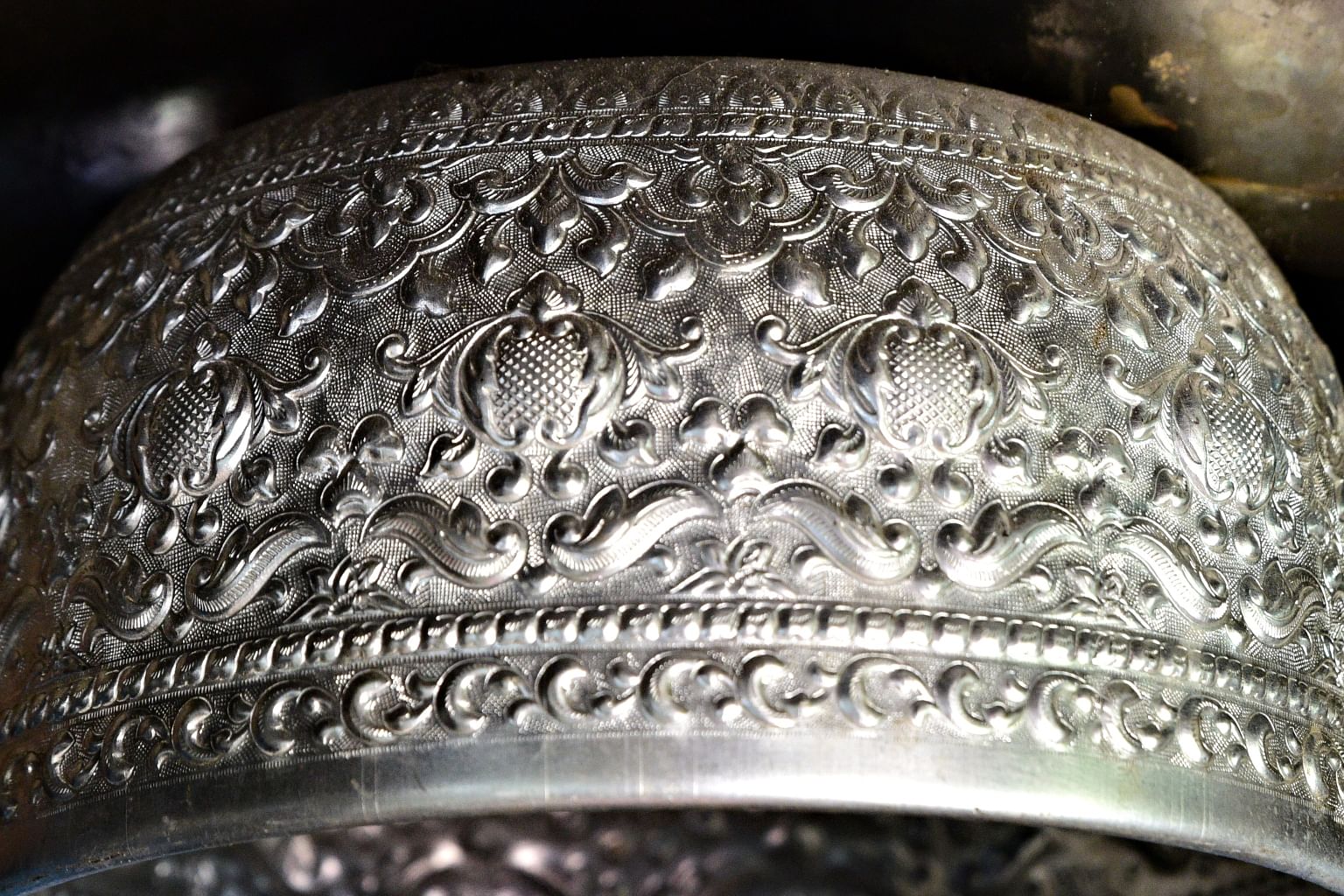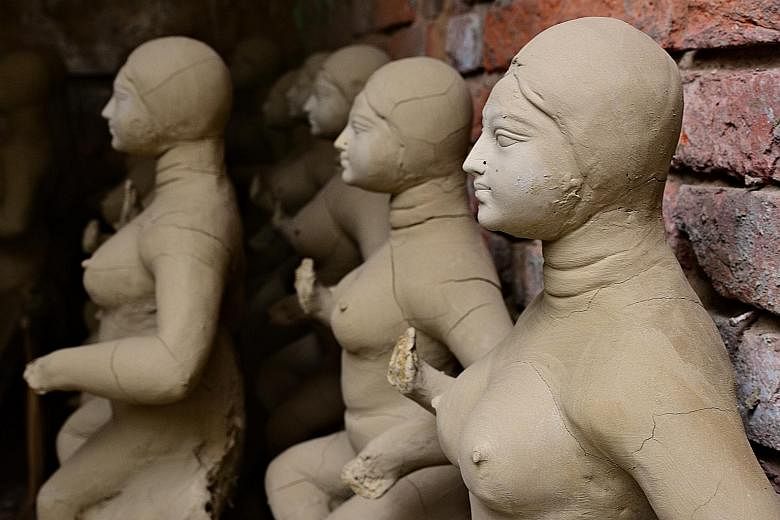In times of crisis like the Covid-19 pandemic, people often turn to religion for solace.
Across Asia, a dwindling number of artisans still handcraft items for religious ceremonies, as I discovered on previous journeys.
RELIGIOUS STATUE ARTISANS (HANOI, VIETNAM)

In Hanoi are several enclaves dedicated to ancient trades. Only 50 years ago, there used to be dozens of these neighbourhoods, but industrialisation in Vietnam has meant producing products by hand is no longer cost-effective in many cases.
Fortunately, a few of these villages remain, specialising in the handcrafting of pottery, silk clothes, musical instruments, conical hats and wooden religious statues.
When I visit Hanoi's conical hat village, called Chuong, a veteran artisan tells me her trade is almost extinct, with very few young people taking on this job to replace the previous generation.
I uncover a more positive story in Song Dong village, 20km east of Hanoi's tourist precinct. For more than 1,000 years, this small community has been renowned throughout Vietnam as a centre of religious statue crafting.
Song Dong's artisans also face stiff competition from factories. Their key advantage over their powerful rivals is that they offer custom-made statues.
As he stands in his workshop, the floors of which are thick with jackfruit wood dust, 40-year-old Nguyen Trung Thanh tells me his clients get whatever they wish.
His team of skilled woodworkers can make statues of almost any size, design or colour. They can also craft images not just of Buddha, but also of obscure deities.
While he guides me through his workshop, I see artisans cutting hunks of wood with power saws before meticulously shaping them with a chisel and hammer.
That intense effort, he says, is required to keep this historic trade afloat. For now, it is managing to survive.
HINDU-STATUE MAKERS (KOLKATA, INDIA)

When I say hello, Mr Tarun Pal does not acknowledge me. Immediately, I wonder if I have overstepped my bounds by entering his studio while the 44-year-old Kolkata craftsman is working on a Hindu statue. It turns out he is just deep in thought.
As he smiles and gestures for me to sit next to him, he explains that he often enters an almost meditative state of mind in his workshop. It is in these moments that his most innovative design ideas emerge.
Being original, he tells me, is crucial for a Hindu-idol maker to stand out in Kumortoli, a small village in Kolkata which has been the centre of this artistic industry for more than 200 years.
There are more than 200 statue-makers in this densely populated neighbourhood, and they are his competitors.
Although he stresses that this is not a cut-throat industry - the artisans share strong mutual respect - the friendly rivalry intensifies at this time each year.
It is now just a few months until the biggest Hindu festival of the year in north-east India, the Durga Puja, usually staged around September or October.
The artisans are working flat out to fulfil orders for Hindu idols, which are centrepieces of the festivities.
They are also attempting to out-do one another by crafting the most intricate statues.
Producing distinctive pieces is what helps these craftsmen separate their work from the cheaper, mass-produced statues pumped out of factories, which each year eat into the customer base of Kumortoli's artisans.
While these men make many images of Saraswati, the Hindu goddess of learning, and Kali, the goddess of death, right now they are concentrating on the warrior goddess Durga.
A pristine, 2m statue can sell for as much as $300. But crafting one of these idols can take up to a week and involve a team of four or five men, who each have different tasks.
The process begins with shaping the statue's frame from bamboo and covering it with straw. This structure is then lathered in several layers of clay and left to dry in the sun.
Those tasks are typically completed by less experienced workers, before veteran craftsmen such as Mr Pal slowly and delicately paint the statue,transforming it into a deity.
MONK-BOWL MAKERS (BANGKOK, THAILAND)


Dressed in a long black skirt and a delicate lace top, Mayuree Suasriserm (above) cuts an elegant figure. The 62-year-old Thai woman looks like she is dressed for a formal occasion.
Then she grabs a dusty hammer and starts pounding a strip of steel. The confidence and precision with which she wields this hefty tool is the legacy of 50 years working here in Baan Bat, a small Bangkok community dedicated to making monk bowls (above).
One of the iconic images of Thailand is of orange-robed Buddhist monks walking in a procession, each holding a gleaming silver dish. Known as alms bowls, monks use them to collect food donations from the public.
Baan Bat, a humble neighbourhood in Bangkok's historic Rattanakosin district, is Thailand's hub of monk-bowl makers and has been for more than 100 years.
Mrs Suasriserm is a fifth-generation monk bowl artisan. When her family entered this business, there were no female artisans, she tells me, as she flattens the steel strip.
But at age 12, her grandparents encouraged her to take up this occupation, and since then, it has become common for women in Baan Bat to make monk bowls.
The artisans start with eight pieces of steel, each of which is heated up and slowly hammered until it becomes curved. Each strip is welded together to create the 25cm-wide bowl, which is then polished to create a smooth, rounded surface with a pleasing sheen.
Mrs Suasriserm tells me some monks choose to purchase lighter and flimsier factory-made alms bowls, which can be bought for as little as $7. But they are not nearly as attractive and sturdy as the handcrafted versions that cost between $50 and $70.
"I nearly quit making these bowls a few years ago because it is very hard work," she says. "But my family convinced me not to do that. They said it was our culture and our tradition.
"They were right. I'm very proud to make the monk bowls."
•The writer is an Australian journalist and photographer who splits his time between Ireland and Asia.

